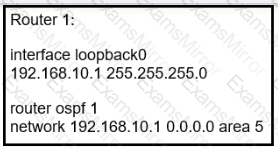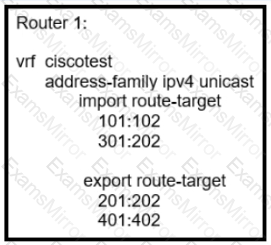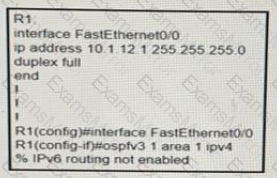Big Halloween Sale Limited Time 70% Discount Offer - Ends in 0d 00h 00m 00s - Coupon code = simple70
Pass the Cisco CCNP Service Provider 300-515 Questions and answers with ExamsMirror
Exam 300-515 Premium Access
View all detail and faqs for the 300-515 exam
513 Students Passed
93% Average Score
94% Same Questions
Refer to the exhibit.

Refer to the exhibit Router 1 is a P router in the ISP MPLS core A connected P router cannot generate an MPLS label for the router 1 loopback0 interface Which action resolves this issue?
How does Layer 3 VPN traffic traverse an ISP network?
An engineer noticed that PE3 is failing to accept IPv6 traffic information from PE1 The engineer confirmed that both PE3 and PE1 routers are configured accurately with IPv6 protocol To eliminate IPv6 traffic loss issue, which action must the engineer take to solve the problem?
Refer to the exhibit.

What is shown in this output?
Refer to the exhibit.

An engineer has configured router 1 to provide shared services to clients behind router 2. To complete the implementation so that routes from router 1 are accepted, what must the engineer configure on router 2?
Refer to the exhibit:

A network engineer is implementing an OSPF configuration Based on the output, which statement is true?
What is the primary function of a VRF on a router?
You are troubleshooting ARP connectivity issues for an Ethernet interface on an IOS XR network that runs IS- IS. You verify that the IGP protocol is running, but an ARP entry has not yet been created.
Which action should you take?
Which utility can you use to validate an LSP in an MPLS environment?
Which two BGP attributes prevent loops in a route reflector environment? (Choose two.)
TOP CODES
Top selling exam codes in the certification world, popular, in demand and updated to help you pass on the first try.
